D&RG /D&RGW Freight Car Information
123



















123
D&RG /D&RGW Freight Car Information
|
I have posted information on D&RG / D&RGW freight cars in response to various threads on this forum and think it could hard to find in the future. My interest is the D&RGW Gunnison Division in the 1923 - 1925 time period, the time when the third rail was still in between Salida and Leadville, and interchange was active. I became very interested in the C&S when I found records of C&S cars recorded in the Marshall Pass hill turn data. Then I discovered D&RGW cars with C&S destinations. Several members of the forum have asked for more information, and I feel this is the best way to provide it.
So I shared on "What is on My Workbench" a 9300 - 9350 gondola project that is under way that raised questions from various members. Following is some information on the D&RG/D&RGW 9200 - 9574 gondolas that Stan Rhine shared with me and graciously give permission to post. The 9200s were built in three lots: 9200-9299, 100 cars, 50" sides (4 boards), straight air brakes, link & pin couplers with continuous draw gear, low draft, built 1898. 9300-9350, 51 cars, 40" sides, 4 boards, straight air brakes, link & pin couplers with continuous draw gear, low draft, built 1899. 9351-9574, 224 cars, 40" sides, 4 boards, straight air brakes, separate draft gears, high draft, built 1900-1902. The surviving 9200-9350 remained low draft until the mid-20s rebuilt. All then also received steel draft arms. All cars rebuilt with auto air (KD brakes) & couplers, probably 1903-06, safety appliances 1911-15, KC brakes in mid-teens. The surviving 9351-9574 also rebuilt mid-20s, but fewer of them got steel draft arms. |
Re: D&RG /D&RGW Freight Car Information
|
This post was updated on .
This is great information, Pat.
Years ago when I first started narrow gauge modeling, I built D&RG, C&S and F&CC cars in HOn3 and ran them in the same train on our local (Houston) narrow gauge club layout. Then I "learned" from the "experts" of the day, that interchange between narrow gauge carriers was very rare, "almost never happened". Your data suggests significant interchange between the D&RG and C&S occurred until the Salida-Leadville 3rd rail was taken up. That makes modeling the period 1905 to 1925 so appealing. Just as one can only build so many D&RG 3000 boxcars, building a fleet of C&S SUF boxcars can also become boring. So now it's possible to mix and match again, since I've "unlearned" the conventional wisdom of days gone by. While some may find discussing D&RG cars on a C&S dedicated forum to be redundant, we should remember that most of the Baldwin coal hauled up Chalk Creek to the Mary Murphy, after 1910, likely traveled in D&RG cars. Some thoughts and questions: I wonder if much interchange occurred prior to 1903. The C&S and its UP predecessors had adopted automatic air brakes by the early 1880's. The D&RG clung to straight air prior to the ICC mandate of 1903. Would D&RG cars with straight air be run in C&S trains with automatic air brakes? Pat's research shows D&RG NG cars interchanged at Leadville traveling the C&S, consigned to Climax, Dillon, Breckenridge, Como, Fairplay and Alma. Is there any evidence of D&RG cars traveling the C&S east of Como to Platte Canon stations, or even to Denver? Having acquired four D&RG 4-board gons from Dale Kreutzer, I've been searching for some photos to re-letter the cars for the 1920 roster (several of Dale's cars are lettered D&RGW, too late for 1920). I'm amazed not only with the variation in car types/details but lettering schemes: 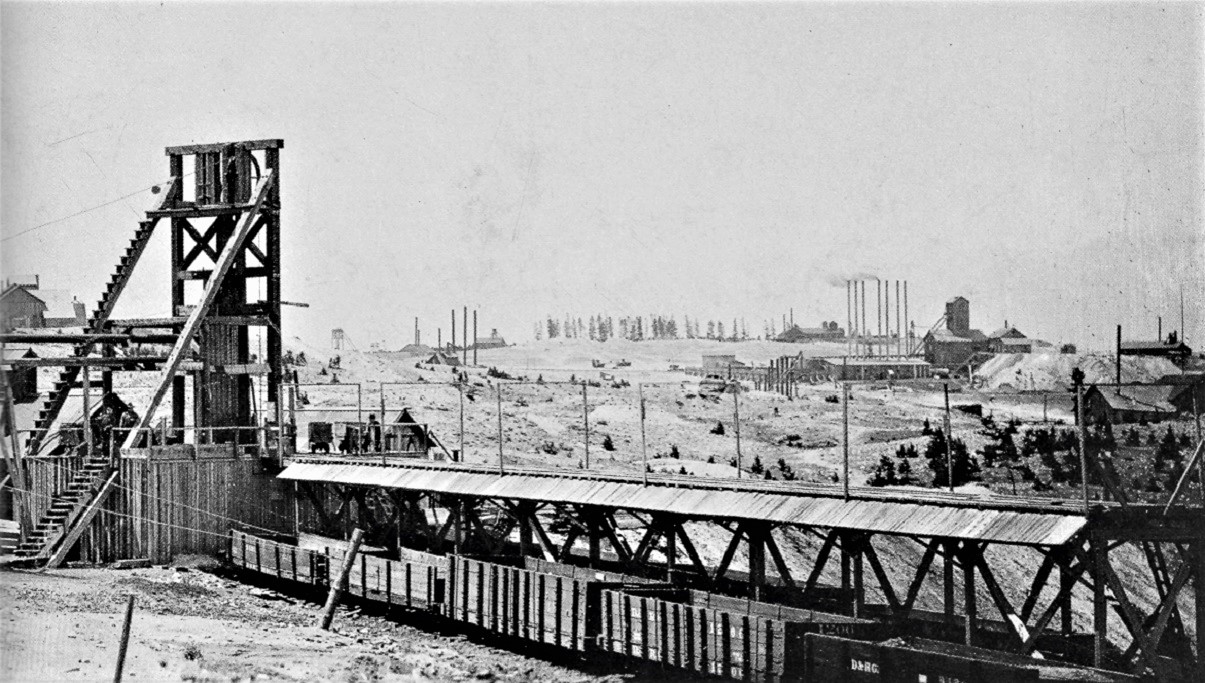 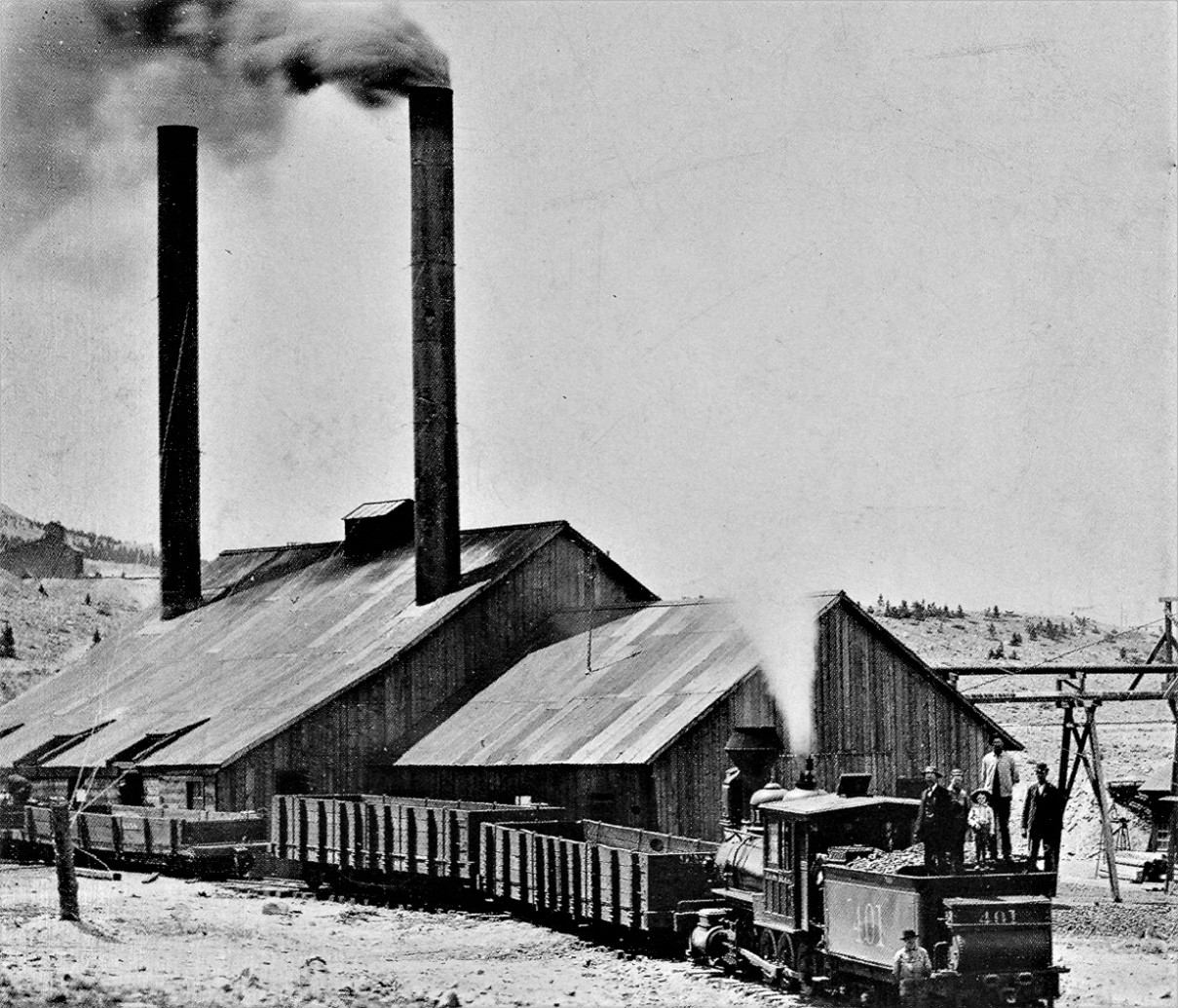 Digerness, The Mineral Belt, Volume I These two photos at the El Paso mine above Leadville show a variety of old and new D&RG gons, as described by Pat above. 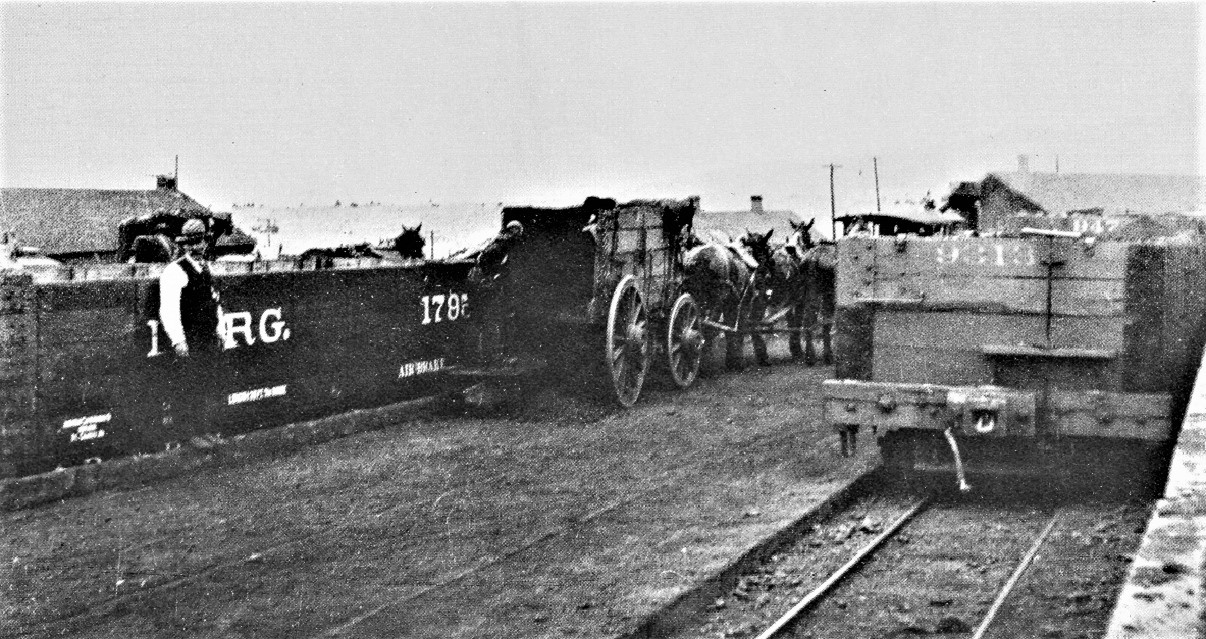 Digerness, The Mineral Belt, Volume I This photo at the D&RG Leadville ore docks shows the end of our friend 9313, so likely taken the same day as the photo we've looked at before. To the left is a brand spanking new 1700 series gon with larger, as delivered, reporting marks. 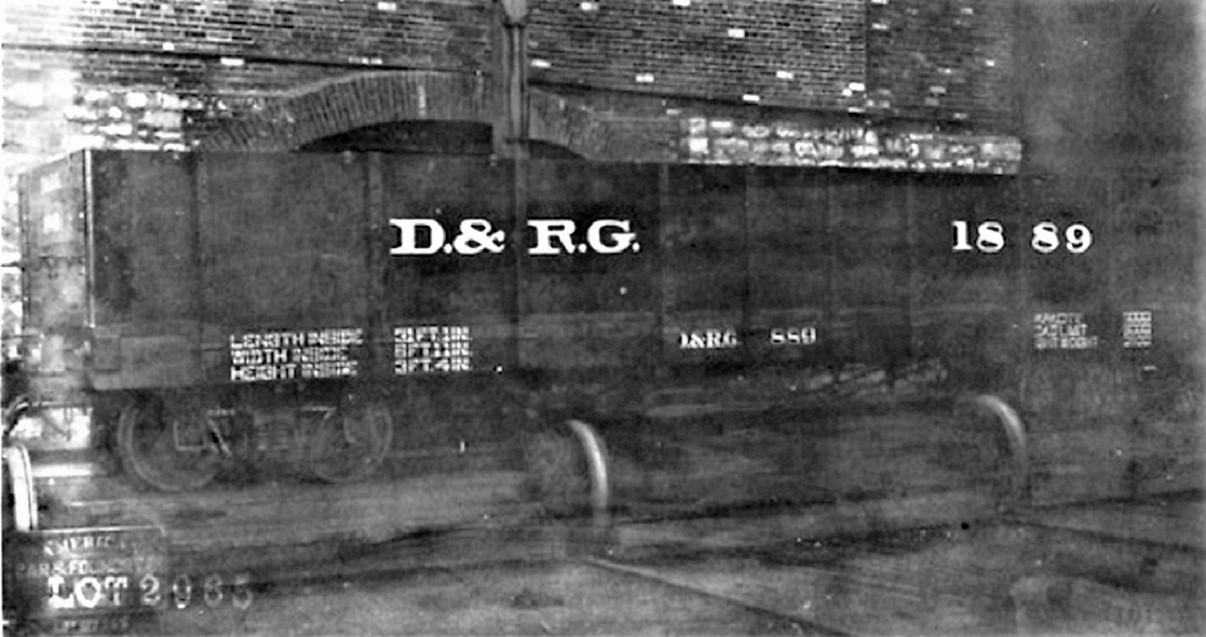 This poor builder's photo from Professor Sloan's book shows the dimensional data on the side sills. A series of WW1 photos from the Dorman collection , of kids and a Harley at Antonito, shows how the lettering styles changed over time: 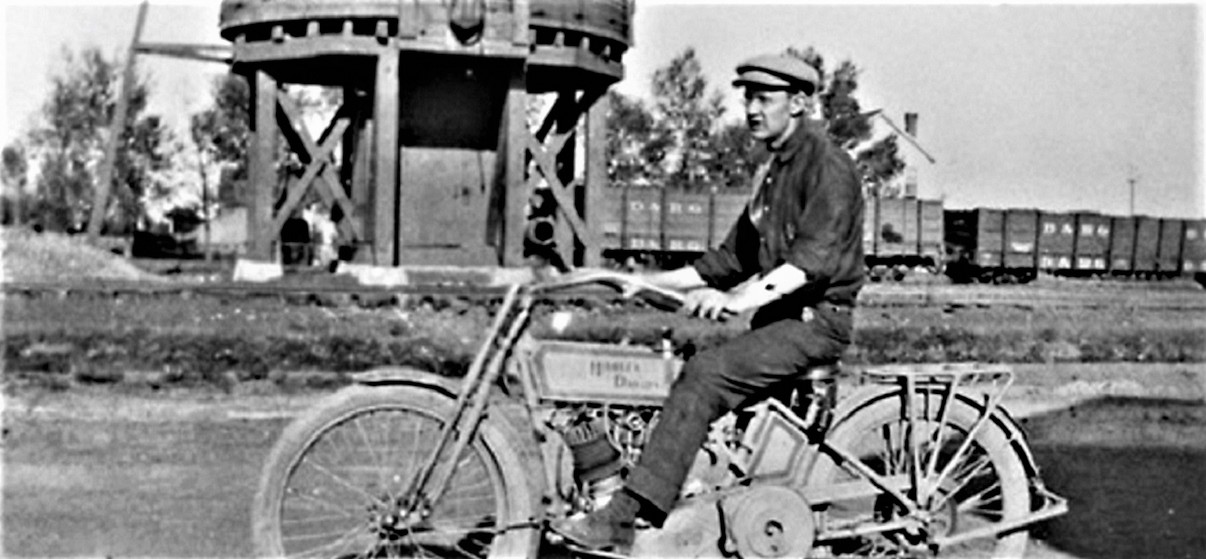 Low-rider of the 9300 series has a different lettering style than the circa 1903 photo of 9313. The high-rider gon to its left has similar lettering with a smaller font. 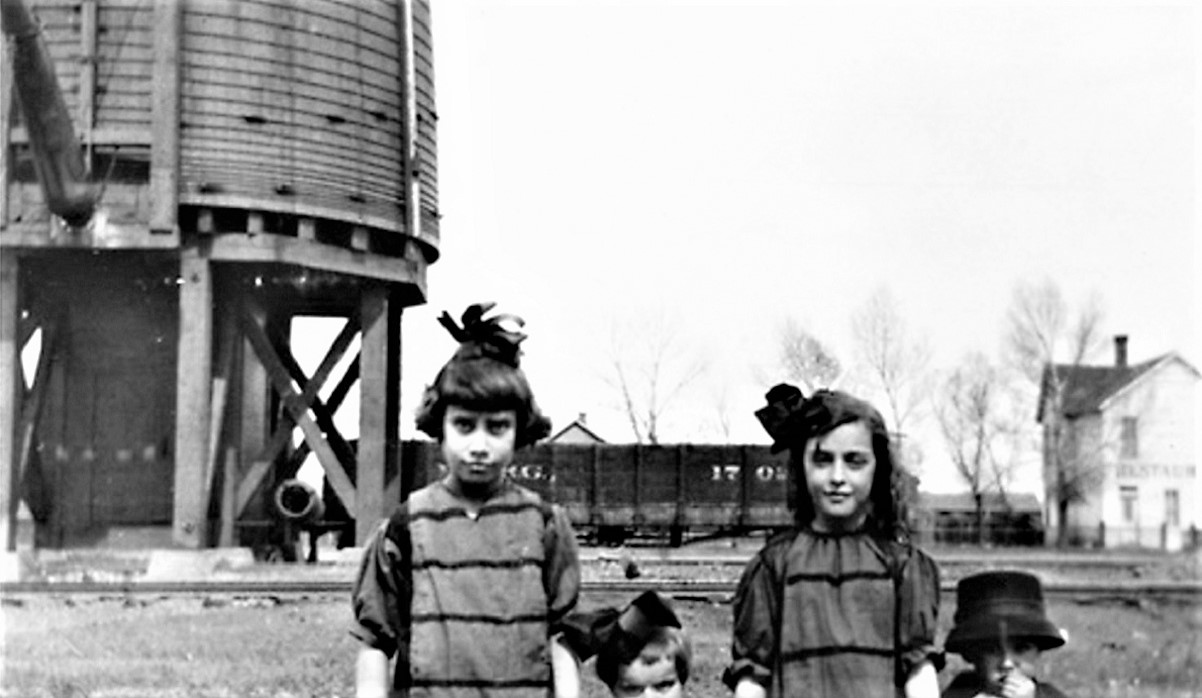 In this photo, gon 1702 still has it's original reporting marks with large lettering/numerals. 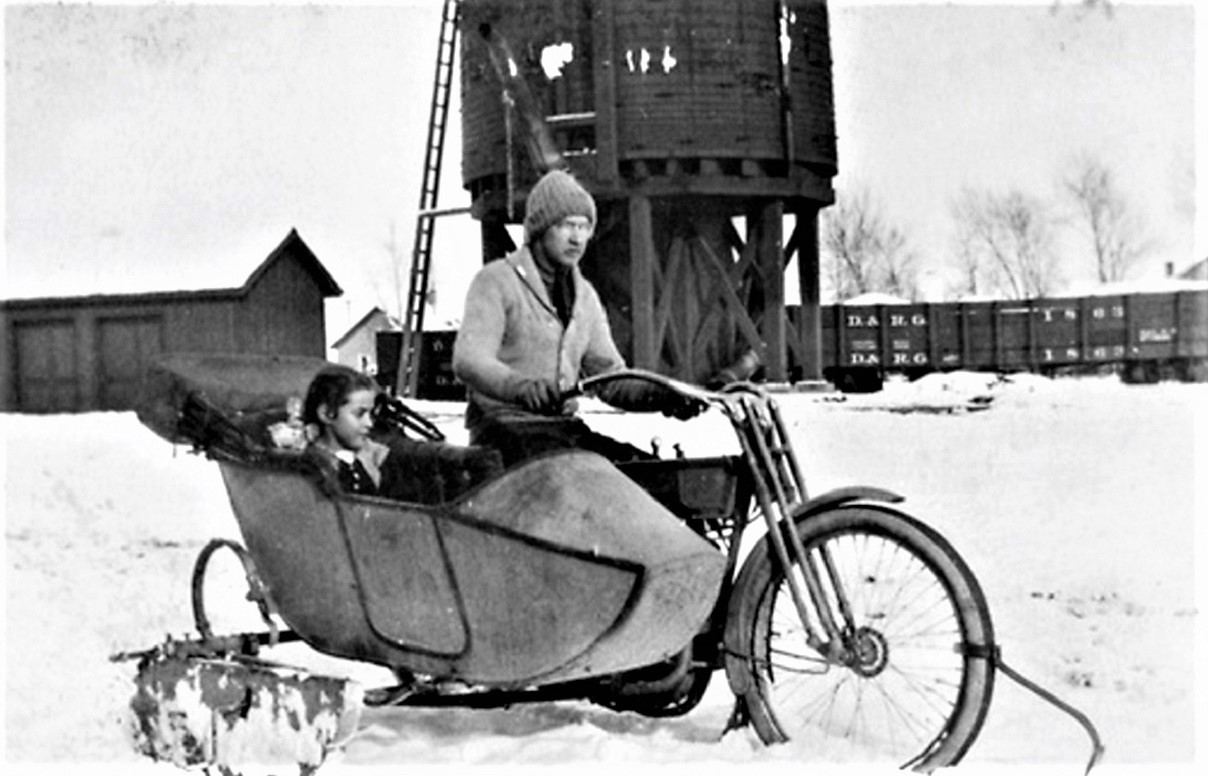 But sister car 1863 has a different lettering style, side boards and sills. Not only incredible diversity in cars but in lettering of any given class of car!
Jim Courtney
Poulsbo, WA |
|
Jim,
As a motorcyclist I love the last photo in this set with the bike fitted with skis on the front wheel and sidecar, would have been hairy to ride? Love the photos and thread, means I can have some D&RG cars on the layout! Paul R. |
Re: D&RG /D&RGW Freight Car Information
|
In reply to this post by Jim Courtney
Jim
My thoughts about the Baldwin Branch was that C&S provided the cars as the Grande operated the branch for the C&S. (Operational license to get C&S cars on the layout as a first assumption.) This may have been true at the beginning and changed as the customer base the mine changed to more points on the Grande. One story I've heard is the the Baldwin coal went to the power plant in Alamosa, what dates - no information. The period we're interested in, before 1925, is before interchange rules, and how cars were interchanged would have been based on agreement between the two roads. With all the data researched, all I have is destinations for the hill jobs. The transportation railroader is only interested in where the car is going, not where it came from, so no origins. Perhaps the C&S and the Grande had as part of the operating agreement that the cars from Baldwin were to be forwarded in the next available train with no stout permitted. I have the same question about CF&I coal from Crested Butte. In the years worth of data on the Marshall Pass hill turns, I did not find a single car destined to Minnequa, site of the steel mill. "Common knowledge" is that the CF&I mines at Crested Butte existed to serve the steel mill. Perhaps this was true at the end of operations, but one needs to remember that the CF&I actively pursued the merchant market. Oh how, I would love to see train consists of the day shed light on these two theories. I know I've strayed into Grande operation more than I should, but believe the limited data available that any modeler operating in the first quarter of the century is well justified on having D&RG / D&RGW cars on their C&S layout, and vice versa. Once the load has been delivered and released it should move back to its home road. It may be loaded at time of release to an on-line point before being intercahec to the home road. Happy operations. Pat |
Re: D&RG /D&RGW Freight Car Information
|
In reply to this post by Paul R.
Jim:
Almost from day one of the DSP&P they were interchanging cars with the D&RG. During the Leadville rush 1879, there is mention in one of the local newspapers, how the D&RG has refused to forward any more of their trust cars up the DSP&P until that road returns some of the D&RG cars. Amongst the holding of the Colorado Historical Society there is a D&RG book of cars received at Divide for a month, and there were at least half a dozen DSP&P and at least one Colorado Central car F&CC cars could be found almost anywhere in Colorado and the same with RGS cars How they did the brake thing I do not know |
Re: D&RG /D&RGW Freight Car Information
|
Ron, so we see quite a few DSP&P cars on the CCRR, which isn't a surprise. What I haven't seen, and maybe have completely missed, sorry if so, is D&RG cars on the CCRR. Was that at all common an interchange?
Dave Eggleston
Seattle, WA |
Re: D&RG /D&RGW Freight Car Information
|
In reply to this post by Ron Rudnick
It wasn't interchange but DSP&P received several NG freight cars from the AT&SF.
|
Re: D&RG /D&RGW Freight Car Information
|
In reply to this post by Dave Eggleston
Best known view of DSP&P cars yet, at the Plutus just West of Stanley Mills.
I can't say I've noticed D&RG cars on Clear Creek, but then I wasn't looking for the imposters.  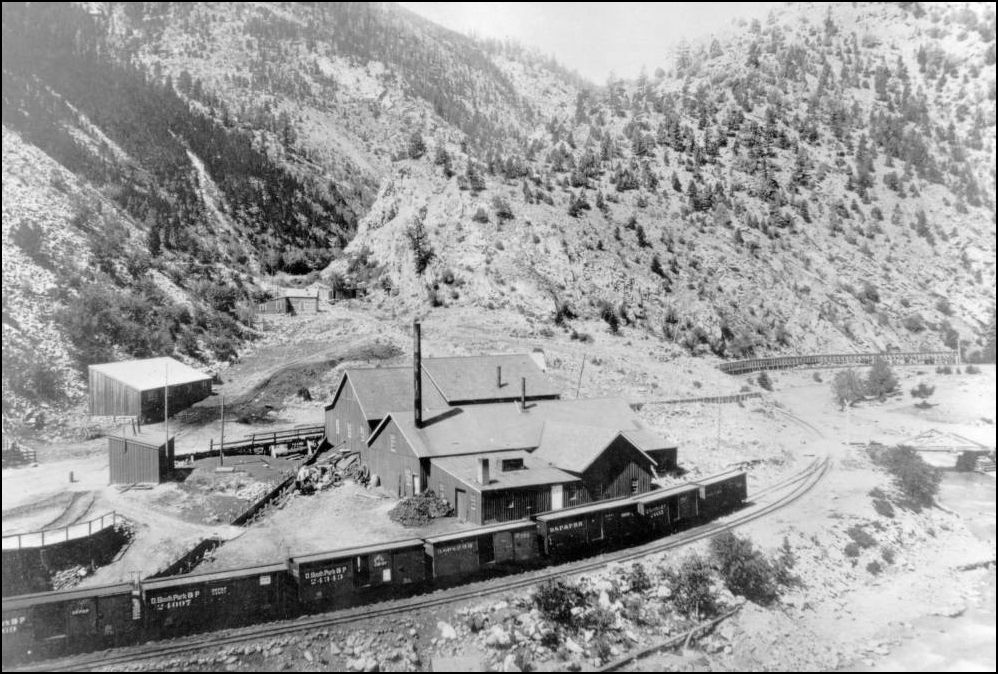 http://digital.denverlibrary.org/cdm/fullbrowser/collection/p15330coll22/id/38845/rv/singleitem/rec/18
UpSideDownC
in New Zealand |
Re: D&RG / South Park air brake incompatibility
|
In reply to this post by Ron Rudnick
Ron and Pat,
Yes Ron, I recall your prior posts that D&RG cars were commonly interchanged with the South Park, beginning in the early 1880's. From my reading, I recall that the South Park's conversion from Eames vacuum brakes to Westinghouse automatic air brakes was a UP initiative, begun after the UP acquired control of the C.C. and DSP&P. The Cooke 2-6-0s and 2-8-0s arrived from the factory in early 1884, equipped with 8" air pumps and a large air reservoir on the rear tender deck. The dates given for conversion of the freight car fleet to automatic air brakes was the winter of 1883-1884. So how were the little D&RG B&S freight cars, equipped with straight air brakes, accommodated in DSP&P trains if all this interchange took place? The principle of the Westinghouse system was for the locomotive air pump to pump up pressure in the train line to 100-120 psi. That pressure, conducted via the branch airlines in each car, would cause the triple valve to drain air pressure from the cylinder (releasing brakes) and charge the attached reservoir with pressure. Any future reduction in train line pressure by the engineer would apply the brakes (the triple valve, sensing a decrease in pressure, diverted air from the reservoirs in each car to the cylinders, applying the brakes in each car). If D&RG straight air cars were in the same train, air hoses connected to the rest of the train, how could this work? Increasing train line air pressure to release the brakes on DSP&P cars would set the brakes on a D&RG cars! To my knowledge, the C&S and predecessors never used a split cylinder / reservoir system, like the D&RG in later years. Thus there was no way to bypass the air reservoir and triple valve, to convert South Park cars to straight air, I'm not familiar with early D&RG freight car straight air plumbing to know whether the cars had a cut off valve on the branch train line to the cylinder, to disconnect the straight air cylinders from the train line. So here is my theory as to how D&RG cars were handled in South Park trains: In Derrell Pooles writings, he states that the C&S cabooses were never equipped with air brakes before the September, 1903, ICC mandate. Prior to that time, the 4 wheel cars had a brake wheel staff on each platform, to tighten the inboard brake beam on their respective wheel set. Consider the famous photo of newly re-lettered caboose 306, circa 1901: 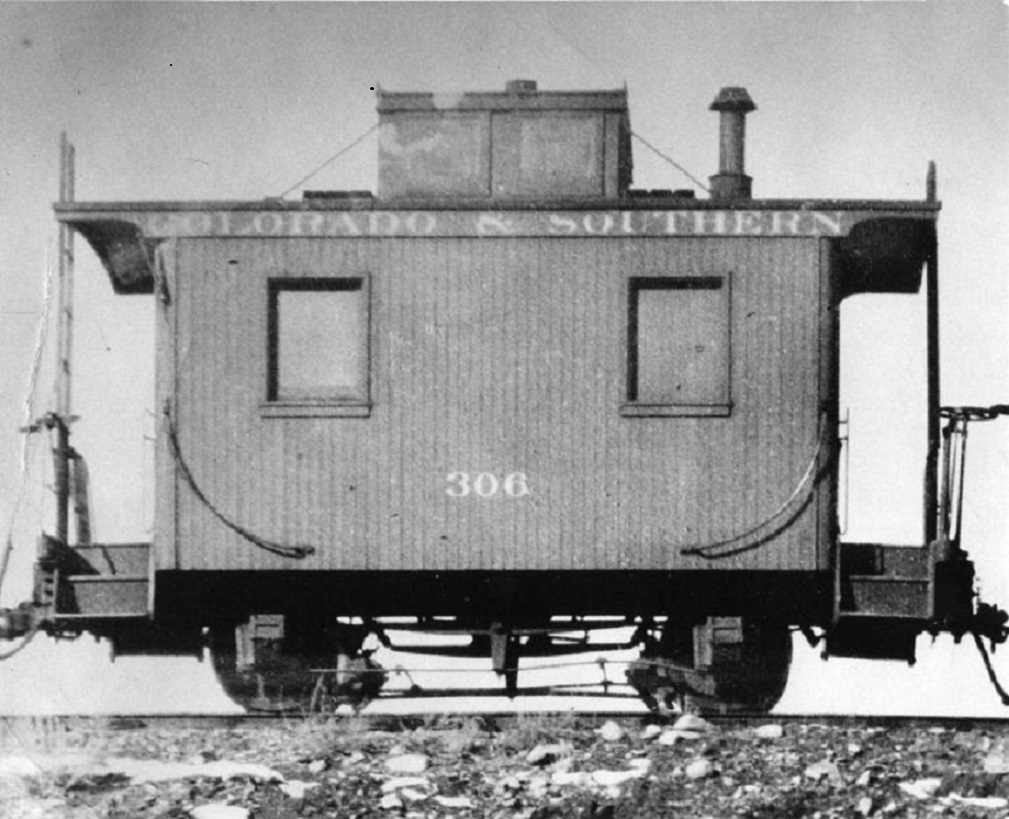 There are obviously two brake wheels, no visible cylinder. But there are air hoses on each end of the car, to allow connection to the train line. There must have been a branch air line inside the caboose with air gauge and dump valve, so the conductor could keep an eye on when the engineer was making a train line pressure reduction to set the brakes; or, if a derailment was underway, to dump the air pressure to zero and set all the brakes in emergency. The only way I can see D&RG straight air cars being handled in the train, was for those cars to be blocked together, at the rear of the train, just ahead of the caboose. The cylinders on the D&RG cars would be cut-off from the train line (if cut off valves existed), so the last cars of the train would have no air brakes. The forward consist of the train provided the air braking for the entire train. If that was insufficient going down grade, the rear train crew would have to climb up on the D&RG cars and set hand brakes. I'm also a fan of the Northern Pacific. On reading about the NP's adoption of air brakes, it was done incrementally over a few years, in the early to mid 1880's. Cars that had been equipped with air brakes, had a large "AIR BRAKE" stenciled diagonally on the car side. This was not an advertisement of a new safety feature -- it was to easily allow trainmen in the yards, assembling trains, to block all the automatic air brake equipped cars at the head end of the train and all the non-automatic air cars to be at the rear of the train. The ICC requirements of the 1890's, specifying the number / percentage of cars in each train with automatic air brakes, was likely to insure adequate braking power in a train of mixed brake systems. Anyways, that's my theory as to how this worked. After 1903 it all became moot on the narrow gauge systems -- all cars had automatic air brakes. Any thoughts? Feel free to pick my argument apart. 
Jim Courtney
Poulsbo, WA |
Re: D&RG / South Park air brake incompatibility
|
Jim,
The Nevada Central's ICC-mandated adoption of air brakes from hand brakes began in the late 1890s but took almost 20 years to finish. At first only the two combines and some boxcars were braked; some other freight cars eventually carried pipes to run air through but had no air braking gear. That's one solution to the problem. Knowing the NC, I suspect a lot of cars didn't have those pipes. So the other solution I suspect they used was the grouping of air braked cars behind the engine, non-airbraked behind that. NC photos and documents don't confirm this but it seems plausible. Maybe the UP did something similar on the Colorado narrow gauge lines? The obvious problem is providing air/vacuum to two braking technologies at once. Was one disconnected? Seems crazy.
Dave Eggleston
Seattle, WA |
Re: D&RG /D&RGW Freight Car Information
|
In reply to this post by Chris Walker
There is a picture taken in the Leadville yards in the early 1880s of a mixture of DSP&P and D&RG cars.The South Park cars have Eames brakes.
|
Re: D&RG /D&RGW Freight Car Information
|
Robert,
the D&RG was in Leadville as you know, and the DSP&P shared the line up from B.V. until the Breckenridge Branch was pushed over Fremont, as you know, so it stands to reason you'll see the cars together. I was replying to Dave's above comment : What I haven't seen, and maybe have completely missed, sorry if so, is D&RG cars on the CCRR. Was that at all common an interchange? I wasn't just showing the usual known examples everywhere west. The destinations on the Clear creek that might receive a shipment in a D&RG carload are a mystery, since there were ample milling and smelting facilities along that Railroad anyway. As I said I haven't noticed one example ever, but then I am not an early freightcar expert and overlook such for the Mining and Milling industry. So to see a D&RG car up Clear Creek on the Narrow Gauge will be the picture find of the decade.
UpSideDownC
in New Zealand |
Re: D&RG /D&RGW Freight Car Information
|
Robert,
Yeah, I can't argue about the mill and ore traffic. In Central City, which I'm most familiar with, you've got a bunch of non-mill traffic: the two big warehouses, a coal chute, a beer warehouse, tiny stock pen, team track, and freight house in CCRR/UP days. More after the receivership ends. Idaho, Georgetown and Blackhawk must've had a decent inbound general freight traffic. Lots of DSPP cars seen wandering Clear Creek and may have been enough for traffic. What if a load in a D&RG boxcar arrived in Denver consigned for a Clear Creek town? Labor was cheap but does it make sense to not unload into a UP-controlled car and run the D&RG car up to the town? I don't know enough about the UP/D&RG interchange relationship, or what was actually shipping into CCRR towns, to answer that. The answer could be in a lurking car behind a building in a photo. Like you, I've not spent time looking for culprits from the D&RG. I keep in mind that so many discoveries have been made of things lurking in plain sight, missed until very recently. On the photo of mixed Westinghouse/Eames cars you mention, the question really is how that works. Are one of the types disabled? One is vacuum, one is air, so it seems something was not attached to one set of cars. Are the cars blocked by brake system type? Extra brakemen on that train?
Dave Eggleston
Seattle, WA |
Re: D&RG /D&RGW Freight Car Information
|
In reply to this post by Jim Courtney
Jim
Your question, "Would D&RG cars with straight air be run in C&S trains with automatic air brakes? " Answer, yes. The D&RG cars would have to have their system cut out, which make it similar to a C&S car with its brakes cut out. From a train handling perspective, it would be better if the D&RG cars were scattered through out the train. If the D&RG cars were bunched together a "live load" would be setup potentially adversely affecting train handling; whereas by scattering the D&RG cars, the braking effect of a C&S car on both sided would dampen the effect of the "live load". The First Safety Appliance Act (1893) and Second Safety Appliance Act (1903) required trains to be equipped with power brakes. Because of litigation the First Act did not become effective until 1900. It only required that a train only have sufficient power brake cars to control the speed of the train without use hand brakes. This make the number or per centaage subject to interpretation. Thus an undefined number of cars with inoperative brakes could be moved in a C&S train, so long as there were sufficient, (How many are sufficient, 1, 2, 10 ...?) cars with power brakes to control the speed of the train The Second Act only requires 50% of the cars have power brakes, though it gave authority to the ICC modify the percentage which it promptly increased to 75%. So after the implementation of the ICC regulation running a C&S train of 12 cars with 9 C&S cars hang automatic brakes and 3 D&RG car having straight air and brakes cut out would be legal. D&RG converted their car to auto and straight air in 1905/1906, and auto air only in the mid-teens. So by 1907 this question is moot. |
Re: D&RG Freight Car(s) Up Clear Creek?
|
In reply to this post by Dave Eggleston
Dave,
your take on these since it isn't my Dept.  At this time period we'd be looking only for D&RG no W. At this time period we'd be looking only for D&RG no W.
From http://c-sng-discussion-forum.41377.n7.nabble.com/Idaho-Springs-Mid-Town-Ore-Processing-Part-3-tp2512p3105.html Second boxcar in centre of picture, 4th car West of the 12th(6th) Ave crossing. 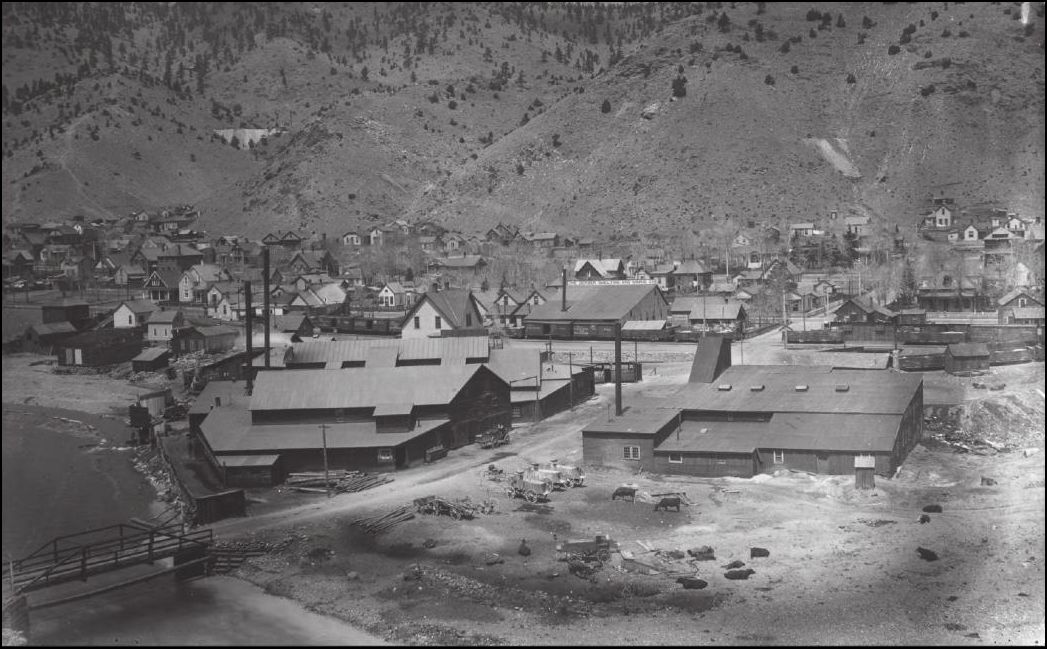 from Idaho Springs Historical Soc From http://c-sng-discussion-forum.41377.n7.nabble.com/North-of-the-Tracks-The-Chamberlain-Sampling-Works-tp1581.html Boxcar on the right. 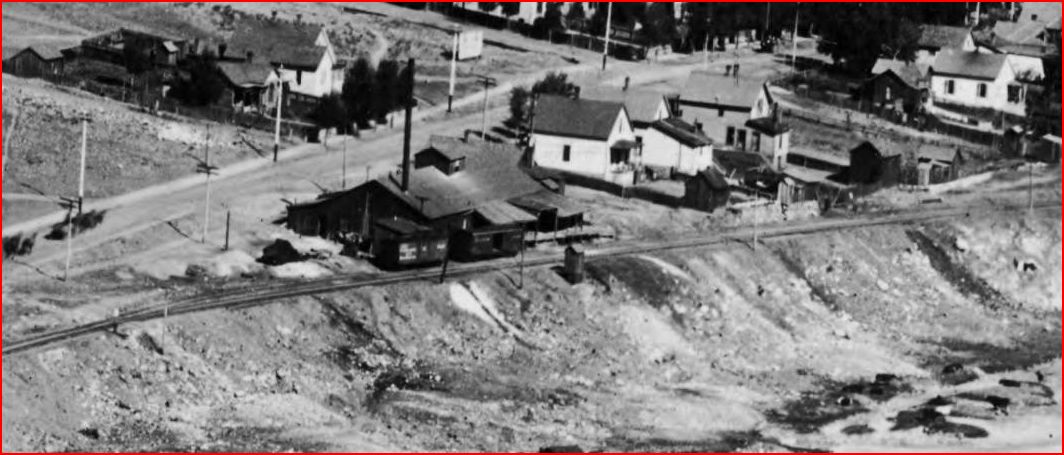 http://digital.denverlibrary.org/cdm/fullbrowser/collection/p15330coll22/id/3381/rv/singleitem/rec/1
UpSideDownC
in New Zealand |
Re: D&RG Freight Car(s) Up Clear Creek?
|
Chris,
Not my department, either, I'm no D&RG/D&RGW expert. I've mostly ignored it in favor a far more interesting set of railroads it competed with  To an expert you may be on to something. Ron Rudnick probably could tell us a lot more. To my relatively uneducated eye the car in the lower photo smacks a little bit of DSP&P lettering style, though that would be wildly unlikely unless the pictures date from well before 1902. How much DSP&P lettering survived to the early C&S?
Dave Eggleston
Seattle, WA |
Re: D&RG 32 Foot Gons in the First Decade
|
This post was updated on .
In reply to this post by Pat Student
I took Pat's advice and ordered the current issue of The Prospector, Volume 17, Number 1, 2018 from the Rio Grande Modeling & Historical Society: http://www.rgmhs.org/store/index.htm.
Stan Rhine's great article covers the early first decade D&RG gons with a wealth of color photos of his large scale model of D&RG 9313. The article isn't completely D&RG-centric either. There is a lot of discussion of period construction methods, hardware and air brake installations that would also pertain to early C&S coal cars. One of the best surprises was a small photo with a link to a DPL photo. A series of Meigs' photographs of the Ohio and Colorado smelter in Salida, circa 1903-1904, yielded several very good full side views of various of the early D&RG gon classes: http://digital.denverlibrary.org/cdm/singleitem/collection/p15330coll22/id/38639/rec/109 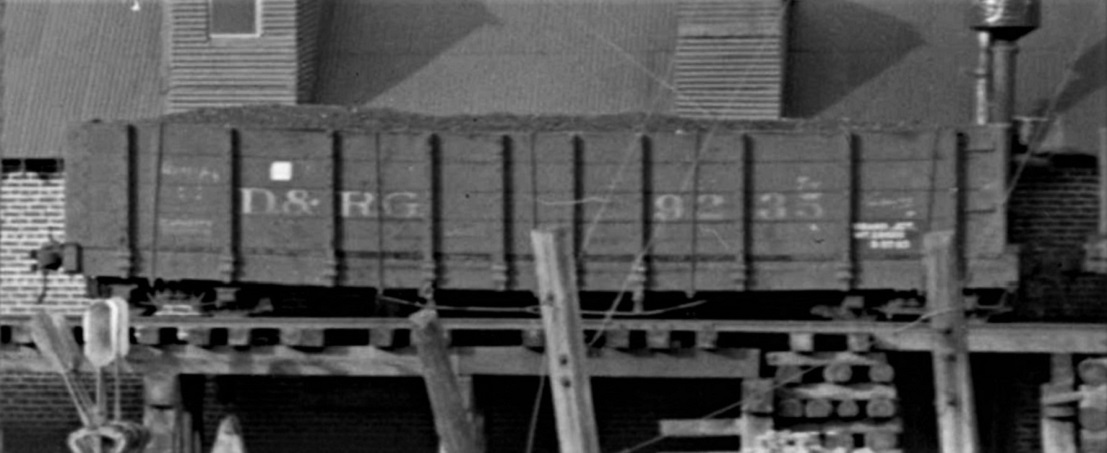 Low riding 9235 has already developed a sag, but has been equipped with automatic couplers. AC&F built mid-1898, it had 50" sides -- one 14' board on bottom and three 12" boards above. (This car is what Sloan refers to as class 12a gon). http://digital.denverlibrary.org/cdm/singleitem/collection/p15330coll22/id/38640/rec/110 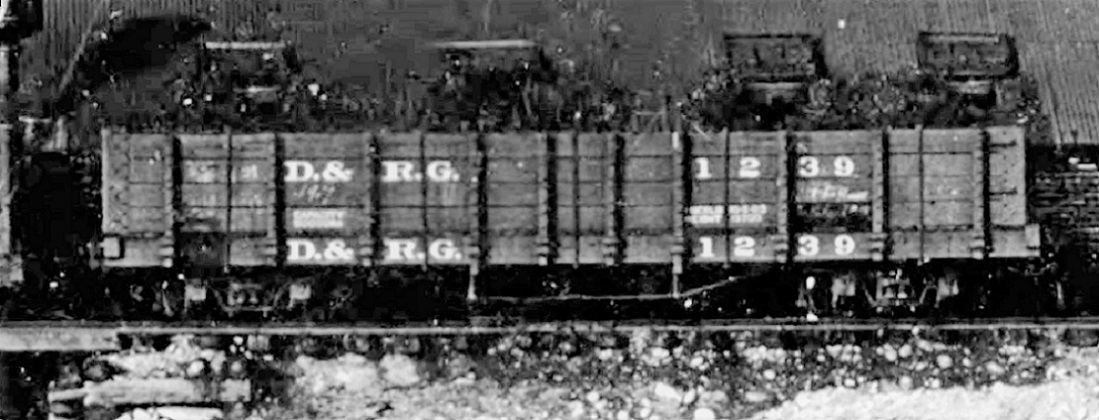 A car from the first half of the 1000-1499 series, with solid floor. AC&F, built 1902. http://digital.denverlibrary.org/cdm/singleitem/collection/p15330coll22/id/38638/rec/108 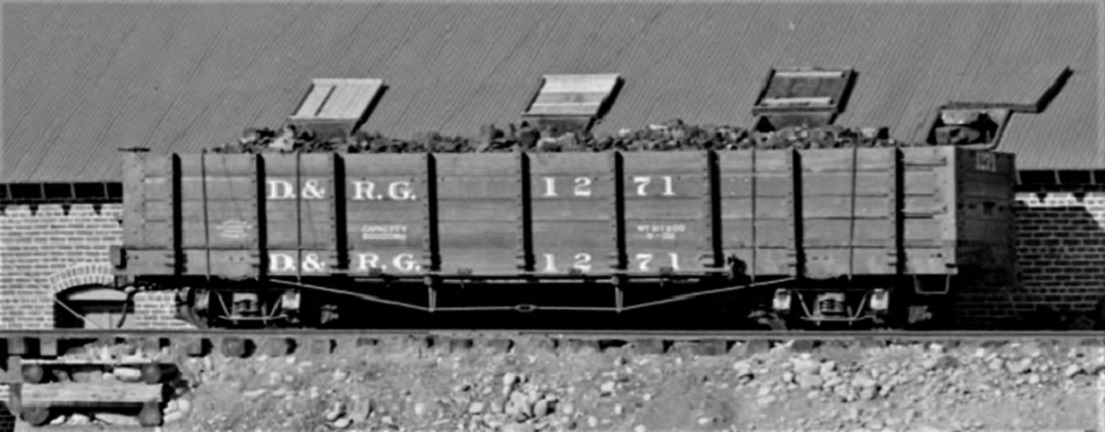 And a car from the second half of the 1000-1499 series, with drop bottom doors at the car's center. AC&F, 1902 http://digital.denverlibrary.org/cdm/singleitem/collection/p15330coll22/id/38639/rec/109 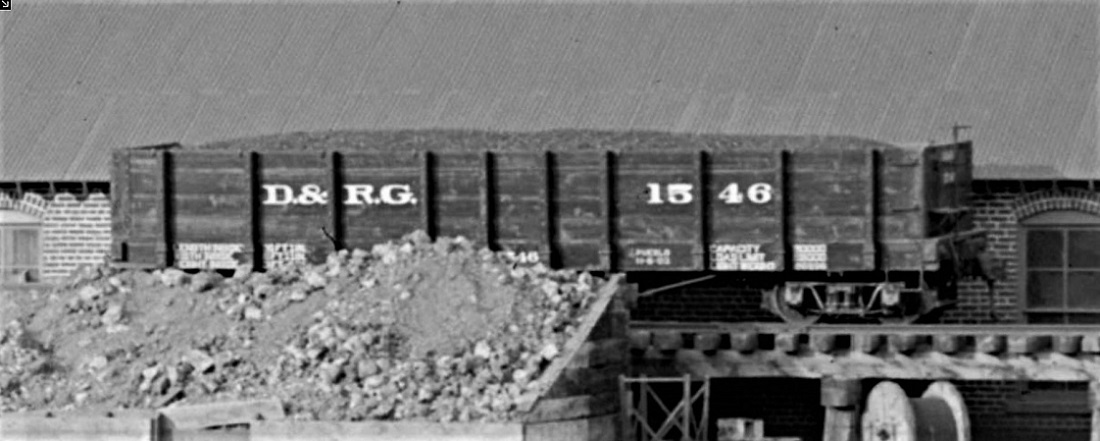 A car from the 1500-1899 series, AC&F, built 1903. I understand Pat's point, that if the D&RG straight air cars with the air cut out ("no air" cars) were bunched together in a C&S trains with automatic air brakes, there would be an exaggerated lurch forward as the air brakes were applied and an exaggerated lurch backward as brakes were released; lots of slack action! I envisioned them bunched together at the rear of the train, ahead of the caboose, to make it easier for the rear end train crew to reach them, should setting hand brakes on these cars be required to control a train downgrade, instead of climbing over half the train to reach them. But where was the cut off valve located on the branch air line, to allow the straight air cars to be cut out from the main trainline? I've yet to find a D&RG drawing that shows the cut off valve -- they must have been there, to disconnect a damaged straight air cylinder from the train line, so train could be moved. Bob Stears' great drawings of both the B&S 24 foot boxcars and the 1896 4000 series, 30 foot boxcars, for The Leadville Shops kits, show the straight air piping to the cylinder, but no cut off valves. Is it possible that they were located right up against the butt of the cylinder, where the branch air line connected? Anyone know? I'm glad that Pat started this thread, as it will be great place to post photos of any of our D&RG models, in C&S trains . . .
Jim Courtney
Poulsbo, WA |
Re: D&RG Freight Car(s) Up Clear Creek? Or maybe not . . .
|
In reply to this post by Chris Walker
I duuno, Chris,
The boxcar in your first photo, the one under the smoke stack of the mill: 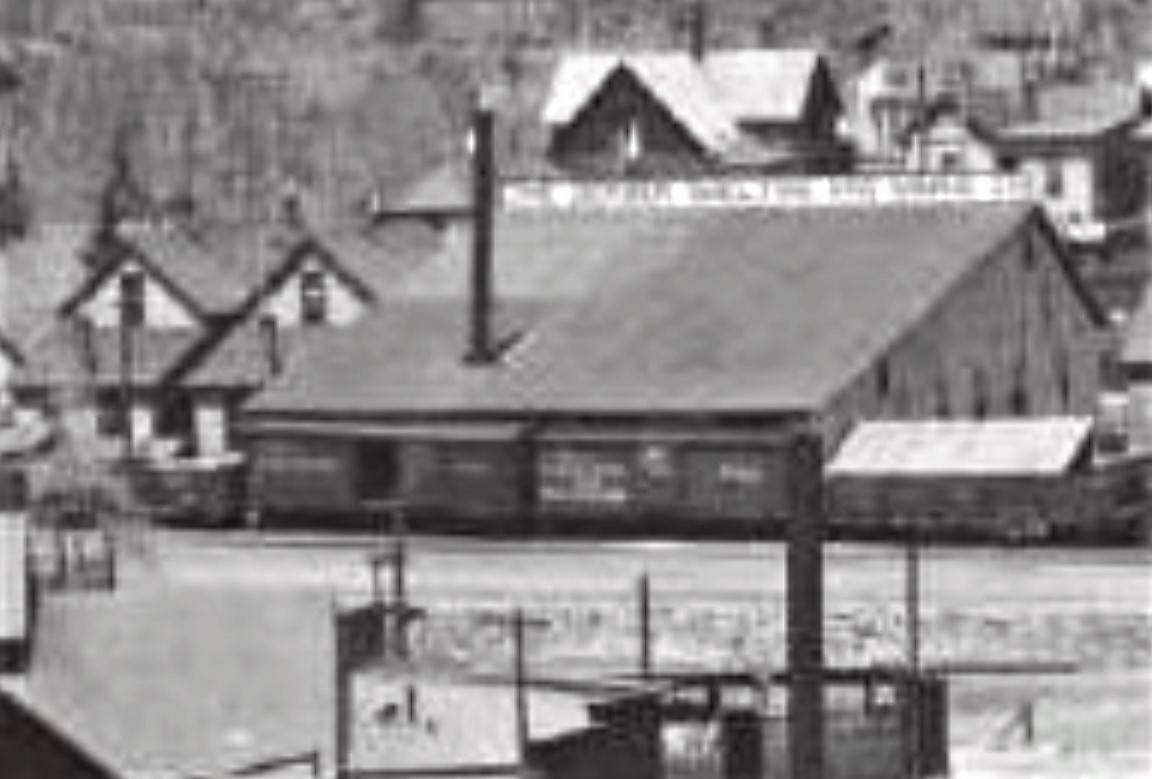 The reporting marks on the side, to the left of the car door, looks to me to be too long for "D&RG". I'm wondering if if is actually "UPD&G"?? And look at the car's relative length and height to the 26-or 27 foot inherited C&S boxcar to its right. You may have stumbled onto the only known photo of one of the 28 foot St Charles boxcars, initially delivered to the UPD&G in early 1898 with UPD&G reporting marks in the 6500 series. Darrell Poole reports that the first order of St Charles boxcars was delivered in the first half of 1898, later renumbered to C&S 7722-7746. Darrell says the first 5 cars delivered, later C&S 7722-7726 arrived as 28 foot cars, but that the UPD&G changed the specs on the order early in production, so the remainder of the cars were delivered in May-October of 1898 as 30 foot cars, as in the folio drawings. The second order of St Charles boxcars, delivered in December of 1898, were delivered factory lettered in C&S livery, these being cars 8025-8064. Evidently, the five 28 foot cars were considered odd ducklings by the new C&S, and were rebuilt to 30 foot cars, to match the others in that series, in very early 1900. This may explain the discrepancies in the folio drawings, the 8025-8064 boxcars "built 1898", while the 7722-7746 boxcars "built 1900", making the latter series out of sequence. If a few of the 7700 series cars were re-"built 1900" and so noted on the folio drawing, that would reconcile things nicely. Seriously, do you think the boxcar in your photo is lettered D&RG?? 
Jim Courtney
Poulsbo, WA |
Re: D&RG Freight Car(s) Up Clear Creek? Or maybe not . . .
|
There is a photo of a UPD&G marked boxcar in Coel's original Goin' Railroading.It is either in a train or a string of cars-I believe in a snowstorm.As I no longer own the book I cant tell you the page number.
|
Re: D&RG Freight Car(s) Up Clear Creek? Or maybe not . . .
|
This post was updated on .
In reply to this post by Jim Courtney
Jim,
>You may have stumbled onto the only known photo of one of the 28 foot St Charles boxcars, initially delivered to the UPD&G in early 1898 with UPD&G reporting marks in the 6500 series. I have no vision of how that lettering looks in my head, do you have a picture? >Seriously, do you think the boxcar in your photo is lettered D&RG?? Yes Jim, that's the only two examples of anything resembling the D.&R.G. 4000 or D.&R.G. 3000 that I feel these two examples resemble most closely in any of my Clear Creek stuff. The cars shown don't fit the early D&RGRW or D&RGRR and the era fits with only the new C&S script(?) lettering that Derrell Poole liked so much. I am open to any speculation it could be a car from the Boulder roads lettering iterations which I am not well versed upon and haven't had the time to pursue. 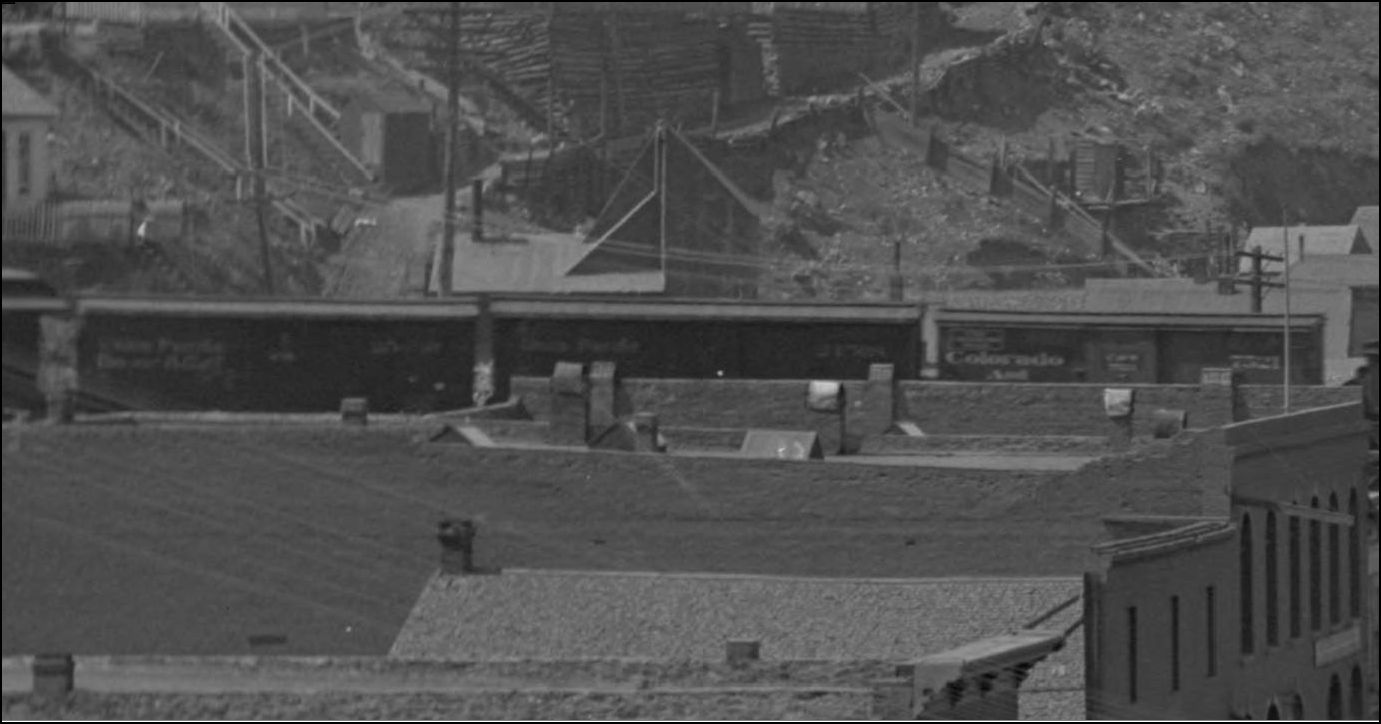 http://digital.denverlibrary.org/ sorry, link not at hand. However I offered these for others to examine not to just say I'm right, because I'm not even decided myself, and I'll try to explain why I'm leaning towards the D&RG as opposed to just dismissing it as not. The Chamberlain photo(boxcar) has always nagged me but I could never work out why, since I'm looking at the Sampler more than looking for examples of the Grime immediately West of Denver. This is what it resembles most to me. Note: I am not distinguishing between a 3000 or 4000 here. 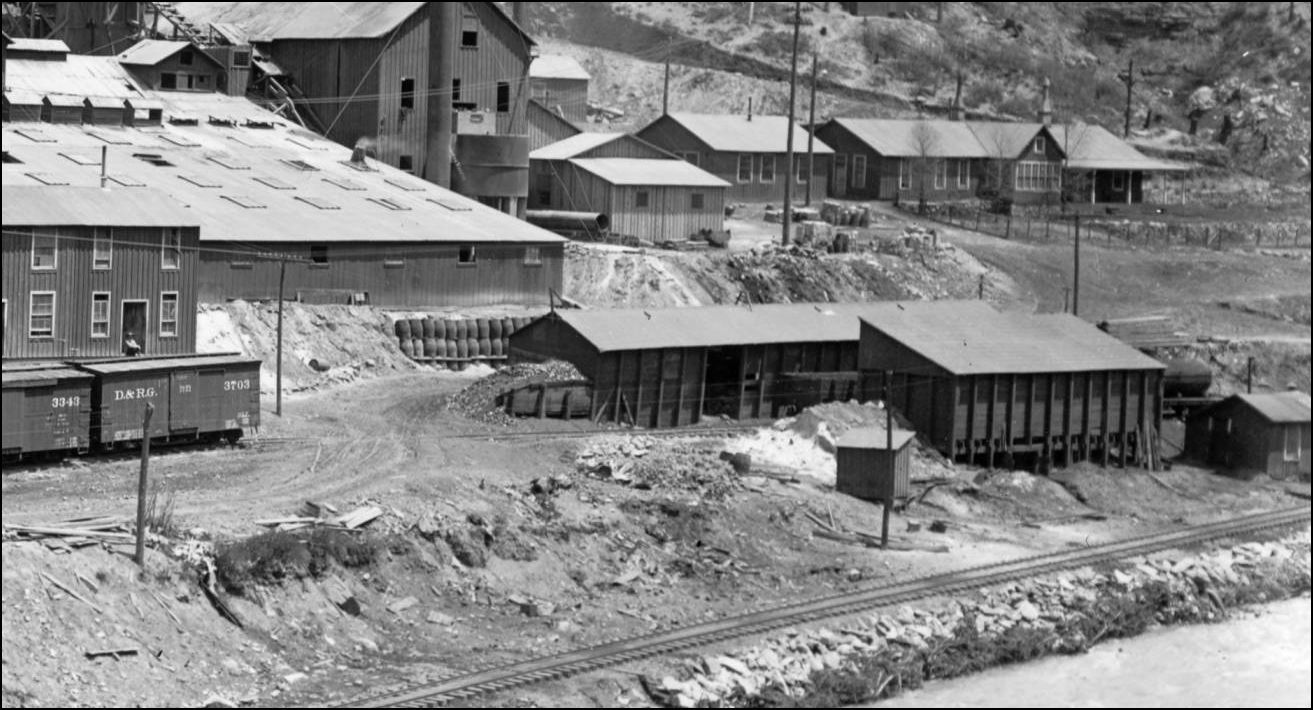 http://digital.denverlibrary.org/cdm/fullbrowser/collection/p15330coll22/id/14753/rv/singleitem/rec/1 This UNION PACIFIC : it does not fit that 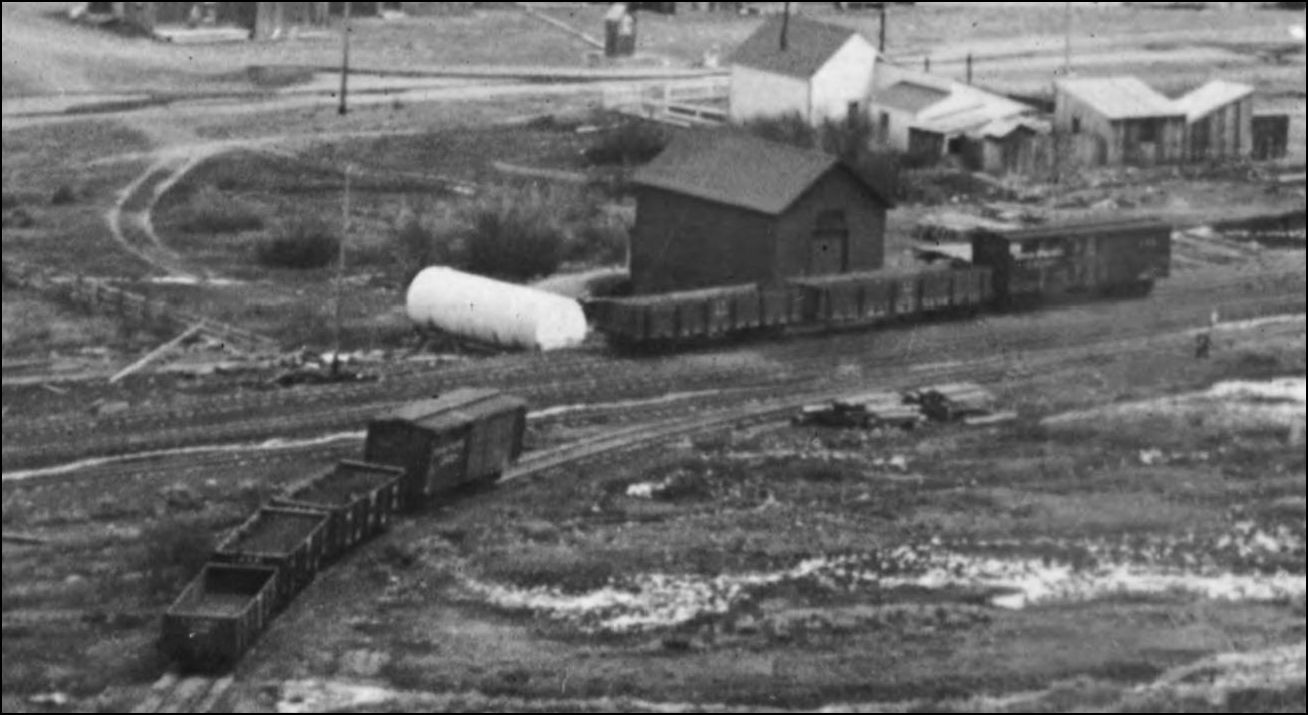 http://digital.denverlibrary.org/cdm/fullbrowser/collection/p15330coll22/id/2506/rv/singleitem nor this 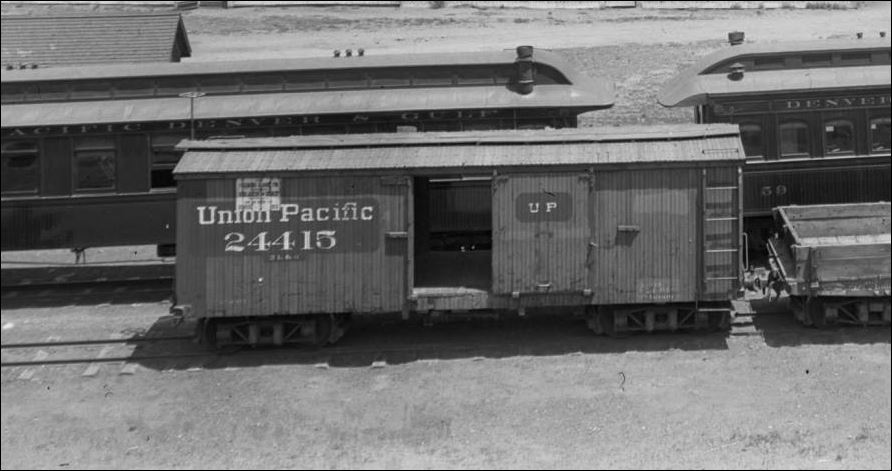 http://digital.denverlibrary.org/cdm/fullbrowser/collection/p15330coll21/id/3681/rv/singleitem/rec/8 nor this 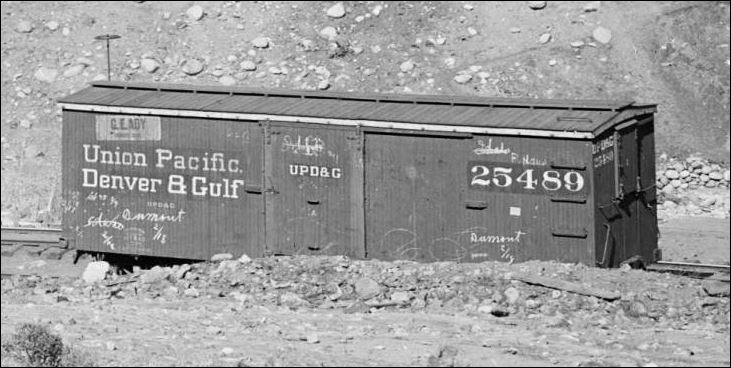 http://digital.denverlibrary.org/cdm/fullbrowser/collection/p15330coll21/id/3311/rv/singleitem/rec/1 It is certainly not this D.SP.&P.RR and I seriously doubt any lettered like such survived being U.P.'d. 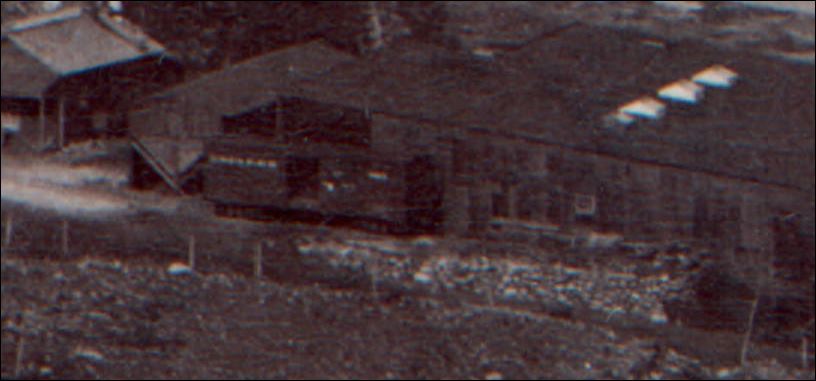 http://digital.denverlibrary.org/cdm/fullbrowser/collection/p15330coll22/id/41181/rv/singleitem From my memory, South Park boxcars got this revamp before the U.P.'d Patched variety. 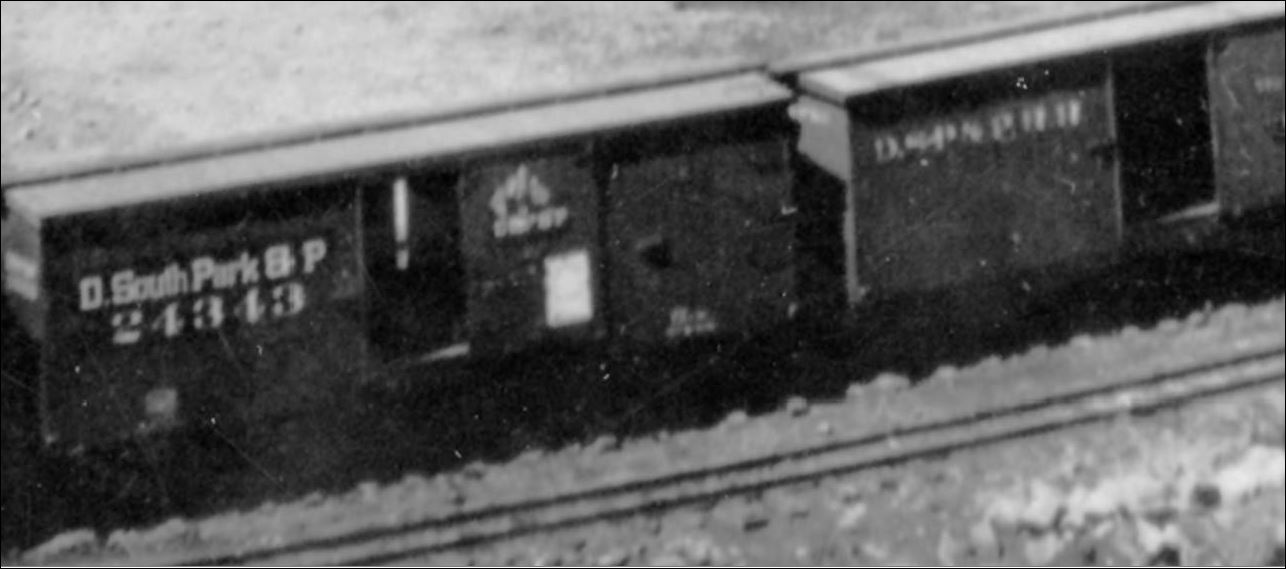 http://digital.denverlibrary.org/cdm/fullbrowser/collection/p15330coll22/id/38845/rv/singleitem/rec/18 If any of you have the Cohen Guide to Early Colorado Freight Car Lettering book, and no his layout of illustrations, then you will see what I mean. I am certainly open to any speculation on this and will be happy to be shown any error in my thoughts.
UpSideDownC
in New Zealand |
«
Return to C&Sng Discussion Forum
|
1 view|%1 views
| Free forum by Nabble | Edit this page |

